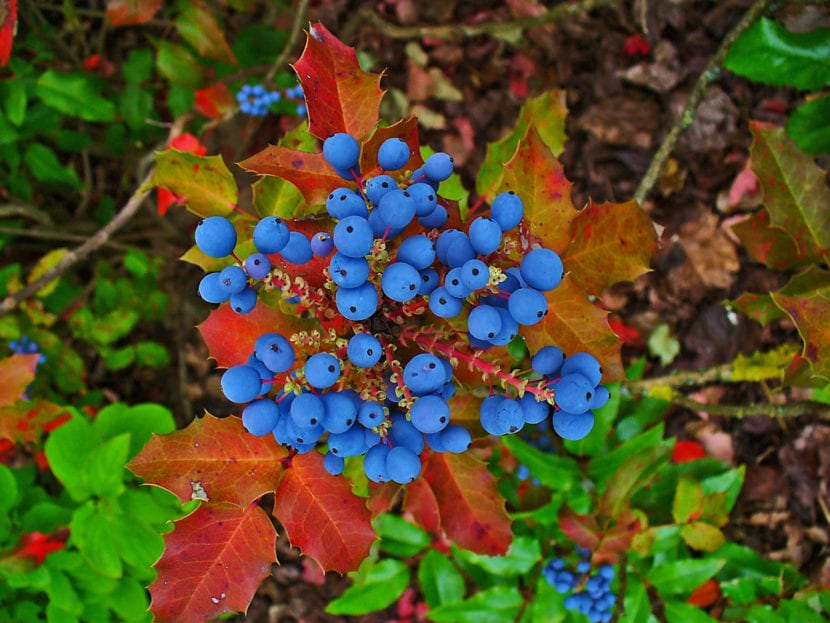What’s the Weed? English Holly (Ilex aquifolium)
What’s it like? English holly is a large evergreen shrub or small tree, growing to 10 m (30 ft) or more. The thick, tough leaves are dark green, glossy, and can have sharp points along the margins; they range from 5-12 cm (2-5 in) long and 2-6 cm (1-2 in) wide. They grow in an alternate arrangement (staggered along the branch–this is one way to distinguish between holly and the native Oregon grape, which has leaflets arranged opposite one another). Holly’s white, four-lobed flowers appear at the base of the leaves anytime from April to July. Male and female hollies are separate plants; bunches of bright red berries, poisonous to us but not to birds, are borne on female trees in winter. Holly is cultivated extensively in the United States, and has many varieties. It prefers shady sites, but can also do well in the sun and thrives in well-drained soils. It is commonly found in wooded upland areas and disturbed areas. Holly farms are still in practice in the Pacific NW; holly in natural areas tends to be more prevalent near these farms. Originally from the woodlands of Europe, western Asia and North Africa, it was introduced to the US as an ornamental.
How does it spread? English holly is a popular cultivated plant. Its primary method of spreading into natural areas is through the berries, which are widely dispersed by birds. Some vegetative spread has also been documented.
What do I do about it? Once established, holly is difficult to remove. Cutting it down will stimulate new growth from the root system, unless the fresh cut is treated with an appropriate herbicide. Small plants may be hand-pulled—this is the best management approach. To prevent established holly from spreading, you can cut off any parts with berries–table centerpieces for you and all your friends!
What native plant can I replace it with? If you like holly’s shiny, evergreen leaves, consider Oregon grape (Mahonia nervosa, or M. aquifolium for a taller shrub) as a native substitute; early yellow blossoms are great for native pollinators, and yield attractive, blue-purple berries. Its leaves are stiff and pointy, making it a great plant to put in places where you don’t want people going!


